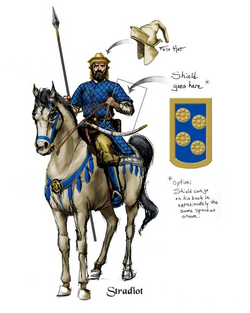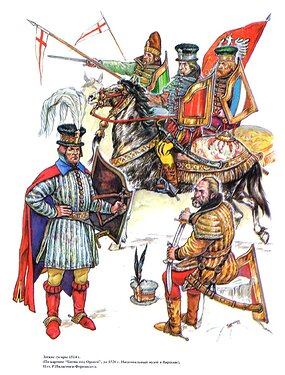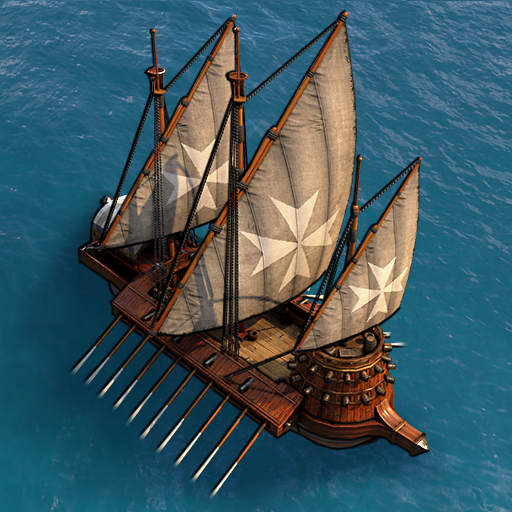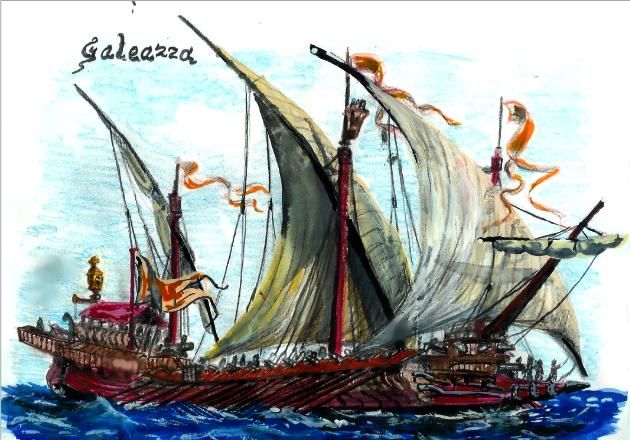Now a bit more about the history behind the single bonuses:
-
Every technology (including age ups) gives you +50 gold.
Description: Now this may seem obvious, but really it’s not that obvious. Venice of course reached the point were it was called the “Serenissima”, meaning the most serene, this thanks to its wealth. If a discussion between a venetian ambassador and an ottoman dignitary, before Lapanto about the Cyprus problem, the venetian ambassador stated that “the Doge didn’t cared about how many gold coins he had to spend, because he had so many of them that they seem to never end”.
Now, in the mid 1500 all this wealth didn’t came just from trade as people might expect, but also from its artisans. Rich merchants buy up the raw materials and then the good passes from artisans to artisans like an assembly line, and then the final product returned on the market.
The technologies generating gold represents those artisans that with their work generated wealth.
- Archery range units move +5/10% faster in feudal/castle age.
Description: the venetians since it’s early days fought on foot mainly, both at close at at range. During the early years of the city, they mainly used bows and arrows, coming from their roman legacy. During the middle ages, like in other parts of Italy, the crossbow became predominant, especially on naval warfare, and during the renaissance of course this was replaced by gunpowder weapons. During the fourth crusade, the city fell thanks to the assault of the venetians “fanti de mar”, their marines, that from the ships directly assaulted the walls and towers. Such actions were them repeated several times, during the venetian-turco the venetians used quickly deployed its soldiers from the ships to surprise the ottomans on several field battles.
Now, that I explained the two sides of the bonus, you can better understand it. I chose this bonus both because it’s conveniently not taken by any civ, and because the venetians had a long experience of fighting on foot and at range, even on land, since their soldiers were used to naval warfare, and this justify the choice of buffing all ranged units, since in different periods, the venetians were skilled with all ranged kind of weapons (some reports also mention some kind of javelin, so the elite skirms are also included). The speed instead is justified by their ability to deploy soldiers quickly and fast for making surprise actions and pincer movements.
Description: this one is a bit more a bonus of convenience, but it has its historical explanation too. Venice of course was a maritime power, and the city built on water, so it was full of docks. They were expert sailors, skilled at trade as much as warfare. This allowed them to establish a lot of colonies on several cities and ports of the mediterranean, black sea, and even the atlantic. For their services, both civic and militaristic, they often asked not a payment on gold or goods, but they asked a portion of the city and their ports, so to settle there sailors and merchants.
Cheaper docks is meant to represent the spread of the venetian colonies, which brought the republic to control directly great portions of the mediterranean, like Crete, Cyprus, the Eubea and Morea, several Ionian and Aegean islands, the Istra and Dalmatia, other than several colonies on the middle east and black sea.
More docks also means more ships, and the venetians were master in such art, with the arsenal that was the first mass production facility runned by the state, a precursor of the industrial age, and with the capability of producing one ship per day.
NOTE: *This bonus originally also included the barracks too, which would cost 125 wood instead of 175 wood. This was justified by the fact that the arsenalotti, the arsenal workers that also functioned as a town militia and the doge bodyguards, lived inside the arsenal, making it not just a production facility, but also a strong point for Venice.
This bonus was then removed for balance purposes, since their drush into archers of FC seemed already quite good.
-
TB: Guilds are 80% cheaper and available in the feudal age.
Description: as already said, merchants and artisans were the core of Venice economy and wealth, it comes by its own that corporations and guilds formed very early and become quite soon a core element of the city. As already described in the UT, the biggest of those were the schole, which gathered all the artisans of a specific sector. Merchants of course were a core element of the venetian lagoon, even before it became indipendent from the ERE.
Venice almost immediately started gathering the control of all the adriatic trade, between the west and the east, and the north and the south, between the italian peninsula and the balkan peninsula. You could buy and sell good from and to anyone, but you had to do it inside the city of Venice. Either by unfair prices, monopoly, or even military activities and piracy, Venice forced all nearby cities and kingdom to sell their products in their city, using their docks and their market, paying of course the fee to them. All products sold outside the city of Venice in the Adriatic needs the consent of Venice, and the cities that did so had to pay a tax to them, which makes it less profitable.
It comes by itself that being an ally of Venice, or Venice itself was advantageous, since Venice basically controlled the prices.
With such bonus, you get a similar effect, by being able to abuse the market early on by getting better trades, while your opponent gets worse trades.




